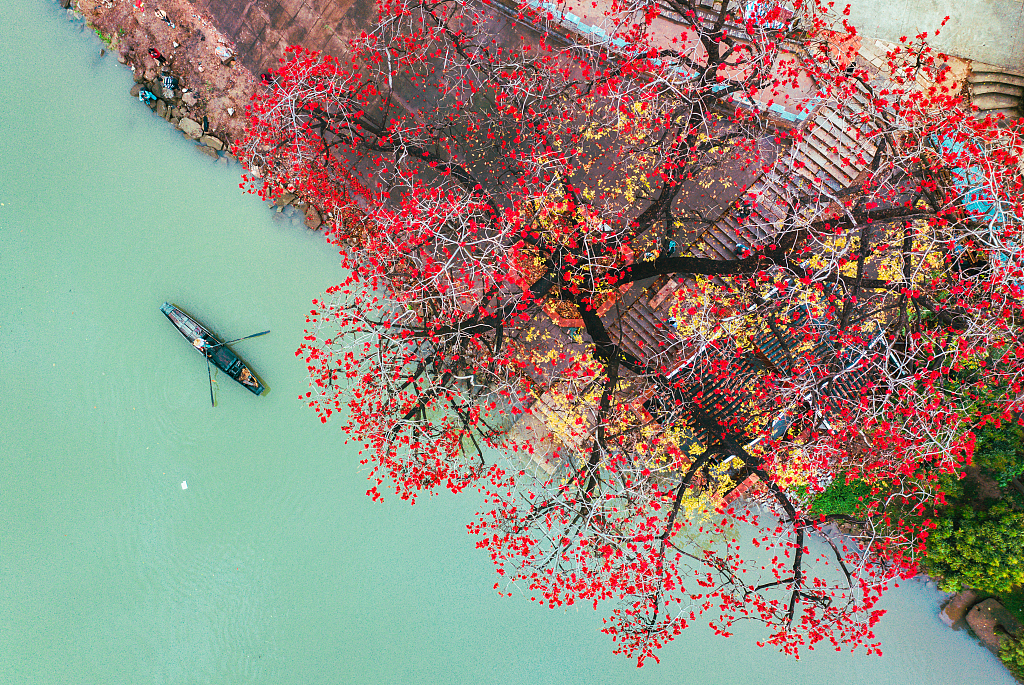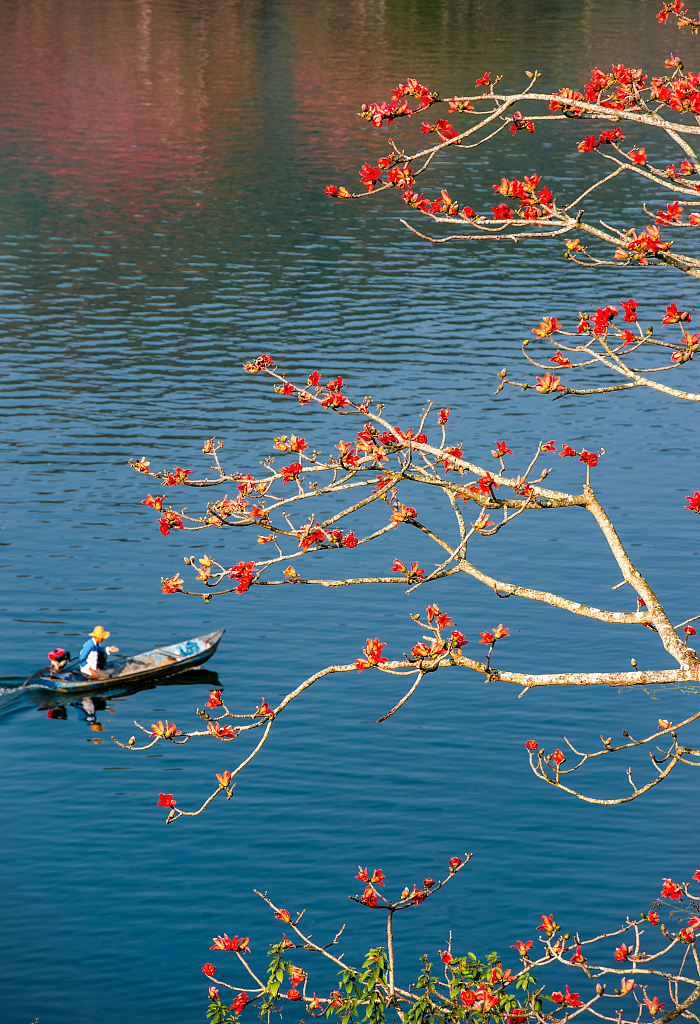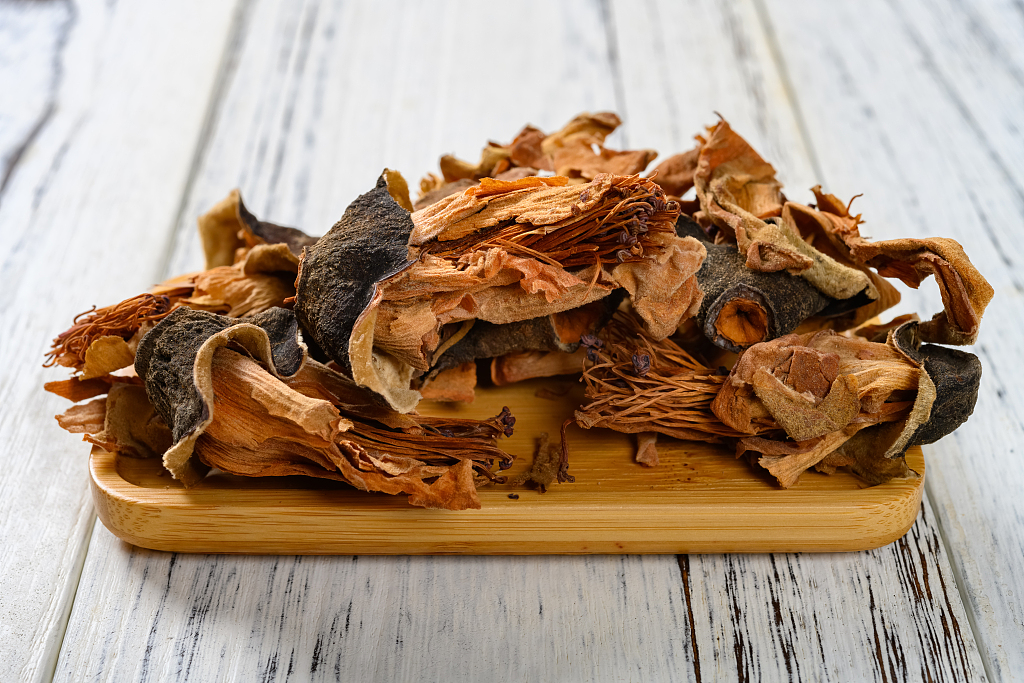Characterized by their red flowers that can be as big as the palm of an adult person, red silk-cotton trees (Bombax ceiba), also known as kapok, are eye-catching in spring. Red silk-cotton tree is one of those species that open their petals before they open their leaves. Every year between February and April, the trees bloom with bright-red flowers but without any leaves.

Aerial view of a flowering red silk-cotton tree in Shunde District, south China's Guangdong Province. /CFP
Aerial view of a flowering red silk-cotton tree in Shunde District, south China's Guangdong Province. /CFP

Flowering red silk-cotton trees next to the Guangzhou Dr. Sun Yat-sen's Memorial Hall, south China's Guangdong Province. /CFP
Flowering red silk-cotton trees next to the Guangzhou Dr. Sun Yat-sen's Memorial Hall, south China's Guangdong Province. /CFP

A flowering red silk-cotton tree next to a river in south China's Hainan Province. /CFP
A flowering red silk-cotton tree next to a river in south China's Hainan Province. /CFP
The tree has a straight tall trunk and its leaves are deciduous in winter. It grows to an average of 20 meters, with old trees up to 60 meters in some places. It can be found in subtropical areas, and is widely planted in China's Yunnan, Hainan and other provinces, where its gorgeous blooms cheer residents and visitors.
The flowers not only have ornamental purposes, but are also used as food for humans and animals. In Guangdong, the fresh petals are collected, cleaned and dried. They are then put into pork bone soup or rice porridge.
Many animals, such as squirrels, birds and monkeys, feed on red silk-cotton flowers as well. In Hainan Tropical Rainforest National Park, the staff once filmed the scene of gibbons sampling the nectar.

Dried red silk-cotton flowers. /CFP
Dried red silk-cotton flowers. /CFP
For more:
Limited edition of seasons: Persimmon in autumn
Limited edition of seasons: Golden ginkgo in autumn
Limited edition of seasons: Silver rime in winter
(Cover image designed by CGTN's Liu Shaozhen)
(If you want to contribute and have specific expertise, please contact us at nature@cgtn.com)